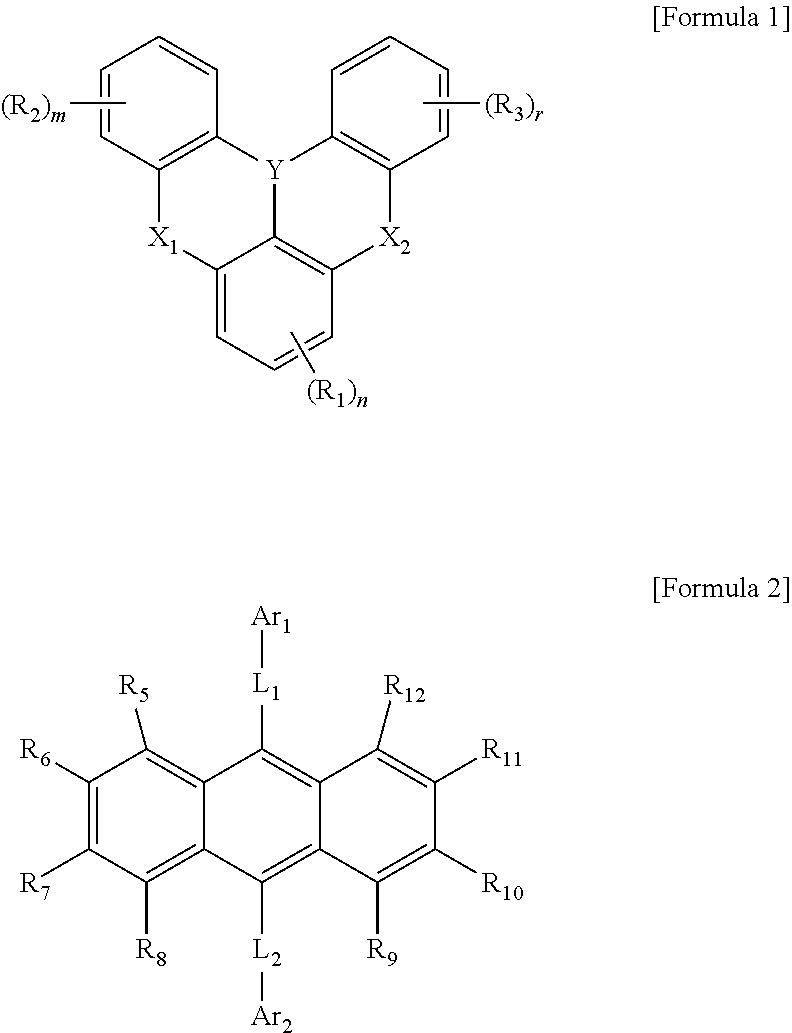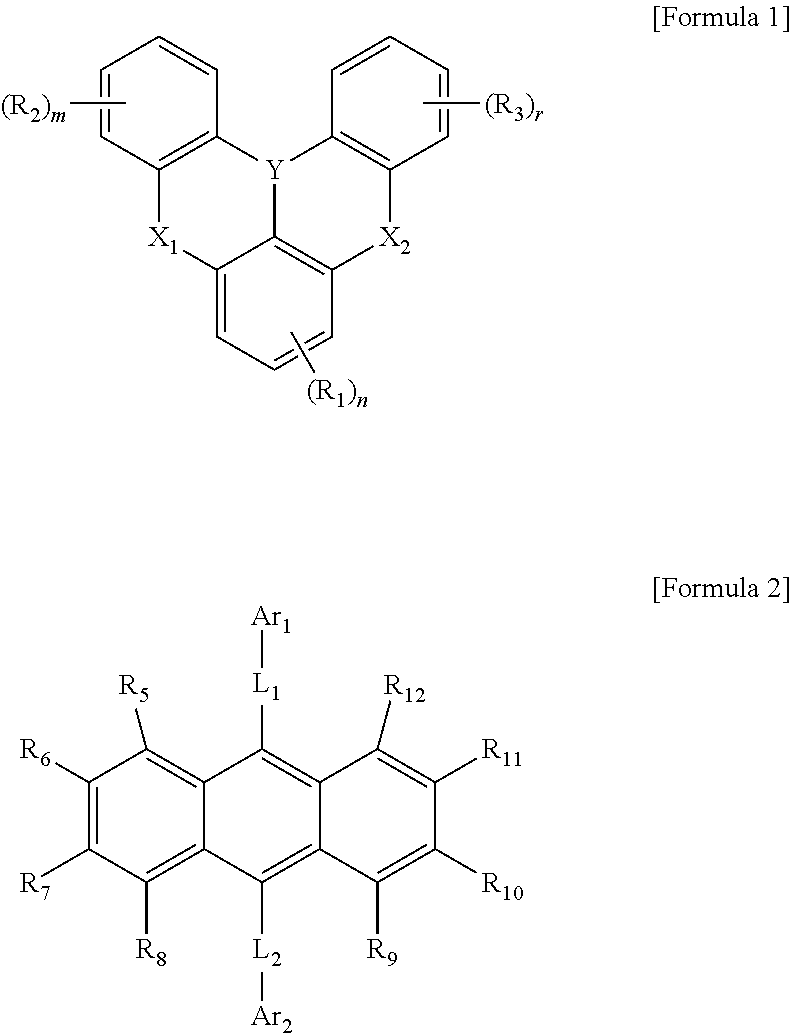Organic electroluminescent element
a technology of electroluminescent elements and organic compounds, applied in the field of organic electroluminescent elements, can solve the problems of difficult commercialization, difficult to display deep blue, and and achieve the effects of improving efficiency, color characteristics and lifetime, and preventing deterioration of color characteristics
- Summary
- Abstract
- Description
- Claims
- Application Information
AI Technical Summary
Benefits of technology
Problems solved by technology
Method used
Image
Examples
synthesis example 1-1
[0097]
[0098]8.9 g (20 mmol) of starting material was dissolved in tert-butylbenzene (250 ml), and then the solution was cooled to 0° C. Under a nitrogen atmosphere, 24.7 ml (42 mmol) of 1.7 M tert-butyllithium solution (in pentane) was added thereto, followed by stirring at 60° C. for 2 hours.
[0099]Thereafter, the reaction solution was cooled again to 0° C. and 4.0 ml (42 mmol) of BBr3 was added thereto, followed by stirring at room temperature for 0.5 hours. Then, the reaction solution was cooled again to 0° C. and 7.3 ml (42 mmol) of N,N-diisopropylethylamine was added thereto, followed by stirring at 60° C. for 2 hours.
[0100]The reaction solution was cooled slowly to room temperature, and the organic layer was extracted with ethyl acetate and water. The solvent was removed from the extracted organic layer, followed by purification by silica gel column chromatography (DCM / hexane). Then, recrystallization from a DCM / acetone mixture solvent afforded 1.7 g of compound 1-1 in a yield ...
synthesis example 1-2
[0102]
[0103]2.16 g of compound 1-3 was obtained in a yield of 23.0% by performing an experiment in the same manner as in Synthesis Example 1-1, except that 9.9 g (20 mmol) of starting material 1-3 was used instead of starting material 1-1.
[0104]MS (MALDI-TOF) m / z: 470 [M]+
synthesis example 1-3
[0105]
[0106]2.3 g of compound 1-5 was obtained in a yield of 23.2% by performing an experiment in the same manner as in Synthesis Example 1-1, except that 10.6 g (20 mmol) of starting material 1-5 was used instead of starting material 1-1.
[0107]MS (MALDI-TOF) m / z: 502 [M]+
PUM
| Property | Measurement | Unit |
|---|---|---|
| full-width at half maximum | aaaaa | aaaaa |
| temperature | aaaaa | aaaaa |
| current density | aaaaa | aaaaa |
Abstract
Description
Claims
Application Information
 Login to View More
Login to View More - R&D
- Intellectual Property
- Life Sciences
- Materials
- Tech Scout
- Unparalleled Data Quality
- Higher Quality Content
- 60% Fewer Hallucinations
Browse by: Latest US Patents, China's latest patents, Technical Efficacy Thesaurus, Application Domain, Technology Topic, Popular Technical Reports.
© 2025 PatSnap. All rights reserved.Legal|Privacy policy|Modern Slavery Act Transparency Statement|Sitemap|About US| Contact US: help@patsnap.com



